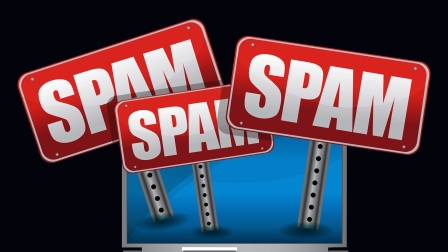If your messages aren’t getting through, it might be time to rethink your email marketing strategy. Columnist Jose Cebrian outlines some steps for developing a “good” sending reputation.
 In the world of email marketing, deliverability is a core issue. It’s commonly known that when you send an email, it doesn’t always reach the intended recipient.
In the world of email marketing, deliverability is a core issue. It’s commonly known that when you send an email, it doesn’t always reach the intended recipient.
Between the sender and the recipient are intermediaries, namely the internet service providers (ISPs) and email service providers (ESPs), which use a mix of internal algorithms and outside filtering technologies that combine to make a decision on each message that comes into their mail servers. Their job is to protect their customers from unwanted mail, phishing attempts and other scams, which are real worldwide problems that pose serious risks, including identity theft.
These intermediaries are at war with the spammers. If incoming mail matches a pattern that’s associated with bad mailing practices, they block the mail from coming in at all or send it to junk mail (which is almost worse).
I don’t think many people consider how serious spam is, beyond being annoyed with some mail they didn’t ask for. But it’s an epidemic that ISPs and ESPs need to combat, and they have lots of hardware, software and intelligence to fight against it.
Marketing emails are important to many of us, but in the grand scheme of things, it’s just marketing email. In the context of personal correspondence and transactional/servicing emails (order confirmations, statement alerts and so on), it’s a lower priority.
So, to get through and be considered “good” email, we must take several steps to develop a positive sending reputation. Think about it. In other media, such as display and social, we wait for people to become visible, and if we are the highest bidder, we get the impression. But with email, we know the person and can send a message to them, but that message may not get through to them. The following are some ways to establish a good reputation.
Common steps to establishing a good reputation
- Leverage dedicated IP addresses for your mailing. The email service providers that cater to the enterprise market all provide dedicated IP addresses for their customers. Enterprise marketers care about this because they want their reputations to be their own — and not impacted by the negative actions of other companies.
- Authenticate (sub) domains that are used for mailing. This is a technical exercise where domain name system (DNS) entries are made for sender policy framework (SPF), domain keys identified mail (DKIM) and other routing information. This is necessary to pass technical checks at ISPs. If you fail a technical check, it’s much more likely you will be blocked or diverted from the inbox.
- Warm new IP addresses and sending domains. That is, establish a positive sending reputation when a new IP address or sending domain is used. This is accomplished by segmenting your list based on who has opened or clicked on at least one of your emails recently, and then sending to those first. In addition, segment campaign volume by ISP to show consistency in volume or to meet preset thresholds.
- Adhere to spam complaints by suppressing those people from receiving future mailings. When one hits “spam” in a major ISP, the ISP sends a notification to the sender that there was a complaint. You want to minimize these complaints because they negatively impact your sender reputations. It’s important to note that not all major ISPs have this feature available.
- Cull unengaged recipients out of the mailing stream. Common rules are that if someone hasn’t opened or clicked an email in 12 months (six months for a Gmail address), we leave them out of the mailing.
What do you mean I can’t email my best prospects?
While everyday email marketers understand this dynamic, if you’re new to email marketing, not familiar with it or only do it occasionally as part of a broader program, this may be a foreign concept. As a marketer, you want to reach as many people as possible who fit your marketing criteria in a cost-effective way. In email marketing, we have to add on another layer that studies the level of engagement in the email channel specifically.
An example that illustrates this is a marketer who has a product that has a very explicit purpose. She has a list of people who qualify for the product — distinguished either by analytical insights or by self-identification.
In every other channel, she would market to these people as she sees fit. However, in email, she not only has to look at their marketing qualification, but also their past engagement history in email alone.
Essentially, if they are highly qualified but don’t engage in email, the marketer would generally not market to them, because that address has the potential to negatively impact all other mail being sent from that IP address and domain.
This is a difficult concept to grasp until you have been through a big deliverability issue, such as a prolonged block at a major ISP, a “bad” reputation rating at Gmail, or a Spamhaus blacklisting. Each of these can significantly impact your ability to get into the inbox, and in turn, tank the ROI of your email program.
Until you have been scarred by one of these roadblocks, you might think you can ignore the unwritten, industry-specific rules. Some marketers will argue that certain taboo practices are technically legal, so there should be no issue. While email marketing in the US doesn’t have a ton of legal restrictions, the practical restrictions are real.
Proportionality matters, especially when starting a new program
These issues can be exacerbated when you’re launching a new program or product and need to build a list quickly. You may leverage volume-boosting tactics like co-registration or email append as part of the mix, but they can create a proportionality issue.
In other words, because the product is new, the size of your engaged audience is too low in proportion to the audience from riskier sources. Co-registration and email appends help build lists quickly but generally perform poorly from an engagement perspective, which creates “risk” to your email program.
While you may earn positive ROI for these tactics, the audiences tend not to respond in email (open and click) at the same level as prospects captured on your own site.
Starting a program with a high proportion of risky sources dooms your reputation from the start, because a positive reputation is nearly impossible to create. No matter how qualified a recipient is for your product, if he doesn’t engage, then he can be a liability.
In limited numbers, you can “feather in” these names, but only once you have an established reputation — and if you do so, only by using portions of the risky sources at a time.
Using all the tools available, including your campaign metrics, ISP reputation dashboards, Return Path’s Sender Score, and inbox placement and monitoring services like 250ok, Return Path and eDataSource, you must watch for signals of a compromised reputation. When that happens, you need to identify the sources that are causing it and weigh the pros and cons of continuing to send to those addresses.
Email is an exciting and powerful marketing channel. But to be successful at it, you have to understand the legal constraints and consider deliverability and its impact on list selection and ROI.
To reduce deliverability issues, many companies have over-suppressed their mailings. If the list is big enough, selective reintroduction can be successful, but it needs to be thoughtful and in proportion to the rest of the list.
Starting a program with riskier names makes building a reputation more difficult. When doing so, it’s important to place as much of the initial risk as possible on the list source and to leverage the information they return to you.
If this still causes issues, email addresses can be used for direct matching as well as onboarding to cookies and device IDs, which will allow you to get messages in front of qualified individuals.
Some opinions expressed in this article may be those of a guest author and not necessarily Marketing Land. Staff authors are listed here.
Marketing Land – Internet Marketing News, Strategies & Tips
(93)
Report Post







